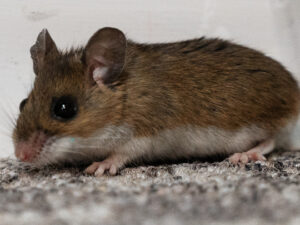
Ticks are the most medically significant arthropod pests in the United States where they transmit diseases to thousands of Americans every year. According to officials with the Centers for Disease Control and Prevention, more than 300,000 new cases of lyme disease are documented annually in the country, and a majority of these cases occur in the northeast. Lyme disease was first discovered in New York state in Long Island and in the Hudson Valley region, and outbreaks have become common in the western and northern areas of the state in recent years. New York currently sees the highest number of annual lyme disease cases in the US, and this is largely due to the state’s massive population of white-footed mice.
The National Science Foundation has identified the white-footed mouse as the primary reservoir for lyme disease. These mice occasionally infest homes, especially in response to adverse weather conditions, but unlike the largely domesticated house mouse, white-footed mice prefer to dwell in naturally wooded areas. These mice specifically favor small wooded areas surrounded by urban and suburban developments, as their natural predators are not as prevalent in these particular wooded habitats. Because of this, white-footed mouse populations skyrocket in the many urban and suburban areas of New York state that are located in close vicinity to moderately sized forests.
A large number of white-footed mice carry the B. burgdorferi bacteria that causes lyme disease, and black-legged ticks prefer to collect blood-meals from these mice within their shared wooded habitats. As a result, most urban and suburban areas throughout New York state are surrounded by massive populations of lyme-infected ticks. When white-footed mouse populations increase due to surplus food sources, such as acorns, so does the number of lyme-infected ticks. However, when white-footed mouse populations decrease due to a shortage of food sources, infected black-legged ticks are more apt to turn to humans as a source of blood-meals, which leads to an increase in lyme infection rates in urban and suburban areas in New York.
Do you take steps to prevent sustaining black-legged tick bites?










